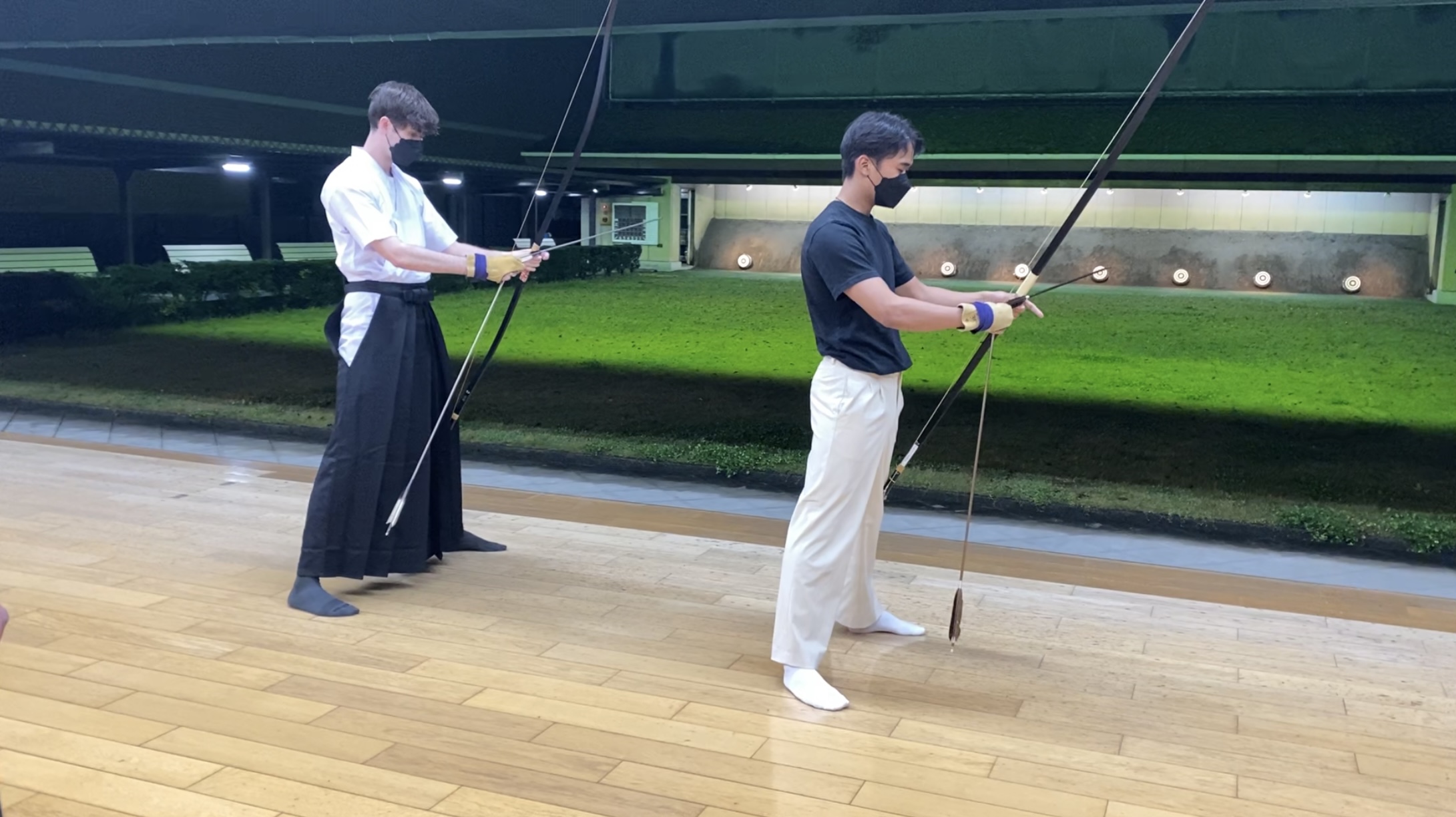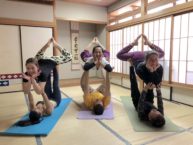I hate stage fright —the way it feels like there’s a riot of dancing mad butterflies in your stomach and a jackhammer where your heart should be; the distinctive itch along the nape of your neck as you imagine all eyes on you; the fear of overhearing whispers commenting on what you did, or did not, do to mess up. Unsurprisingly, it’s scarier when you don’t fully understand what people are saying, when every whisper you hear could just as likely be about you as someone else if only you could understand the language enough to tell the difference.
During the month of training leading up to my first competition in iaidô —Japanese sword-drawing— I couldn’t keep these thoughts out of my head. They kept creeping up on me, pouncing right when I would reach for the hilt of my sword, turning a smooth draw into a stuttering, stumbling flail of limbs and blunted steel. My senseis at the dojo probably noticed it, the way I shied from being in the front row of any in-dojo demonstration or the look of terror that I never managed to hide fast enough when they asked me to perform solo to demo a new technique. One day, as we put the finishing touches on our routines the Sunday before competition, we held a mock competition. As each flight stepped up and ran through the four kata (routines) we had to perform, each person called out their number and the name of our dojo’s style, musoujikiden eishinryuu. When my turn came, I took a breath and started to speak, gripping my sword, sheathed at my left hip, like a lifeline. I made it through the number, but then the name of the style came.
“Musoj— Musokide —Musokiden enryuu,” I finally stuttered out, face probably as pink as my practice kimono. It was embarrassing, to say the least, that I messed up something as simple as our style’s name, but we had to keep the mock competition going. After a quick correction from the head sensei, N-sensei, my flight and I completed out set and soon the mock competition was over.
The dojo’s de facto mother figure, H-sensei, had of course been watching, and when we split off into belt groups she took over teaching mine and started by having me practice saying our introductions. I could do it if I went slow, but it sounded odd coming after the confident declarations of my belt-mates. Rather than letting me apologize, she waved her hand in that affectionately dismissive way few can pull off and turned to all of us. With a clap of her hands she declared,
“We’re all your nakama. And so we’re going to help you.”
Then she turned to the native Japanese speakers and had them all say their introductions again, but this time at a steady and slow pace that I could match. I was stunned at hearing her declare us all to be nakama —friends who share a close bound and look out for the well-being of each other and the group— and felt myself wanting to cry at the sincerity and acceptance with which she said that and at the grins the other students immediately sent my way.
We all sounded the same when H-sensei was done with us, and as she went off to talk with another student, I apologized again to the other students, feeling bad for inconveniencing them. They just chuckled, and K-san, a feisty young woman the same age as me, replied with her trademark smirk,
“Isshou ni ganbarou!” (We’ll do this together!)
Then the call for us to lineup and ceremonially remove our swords for the final time as practice ended went out and we all scrambled for our places. I smiled through the whole thing.
When competition day came, I was nervous, but not nearly as much as I would have been if I didn’t know I had my dojo-mates and senseis, my nakama, standing beside me and supporting me. My flight went up, and we all said our introductions, my own fitting in right alongside theirs, even if the American accent I can never seem to shake fully was still there. It was over in a flash and we walked off the stage together, laughing with the aftereffects of nerves and congratulating each other on a job well done as our senseis smiled in approval.
In the end, I didn’t place, but I still consider the memory of that experience alongside the men and women who count me —and I them— as their nakama to be one of my dearest from my time here. Moreover, I learned first-hand about the importance of teamwork in Japanese group mentality and how that translates into experiences such as my own, where the members of a group look out for the well-being of both each other and the group as a whole. Though this is not a quality unique to Japanese culture and society, it is one for which my experience here in Japan, interacting with the Japanese, has been all the richer.


